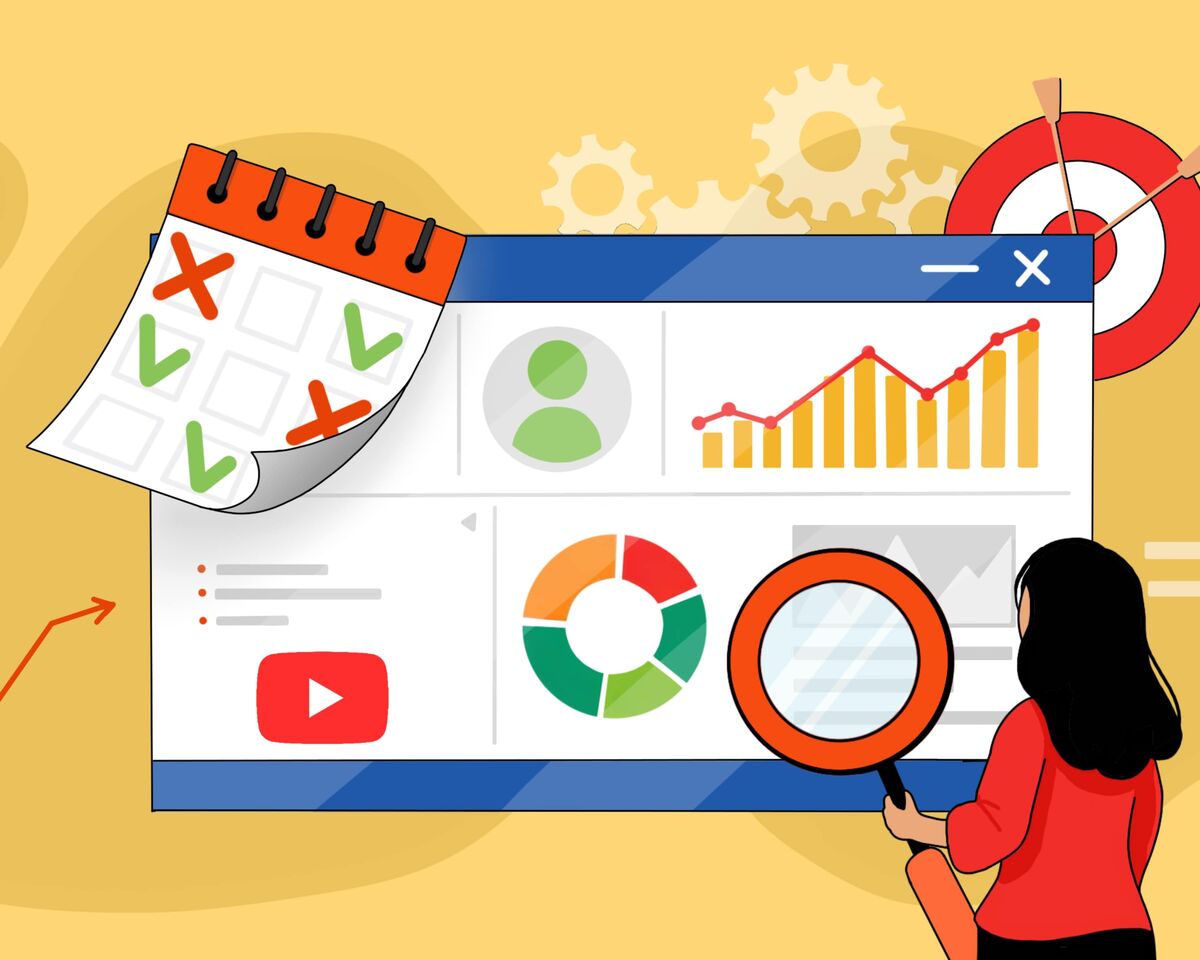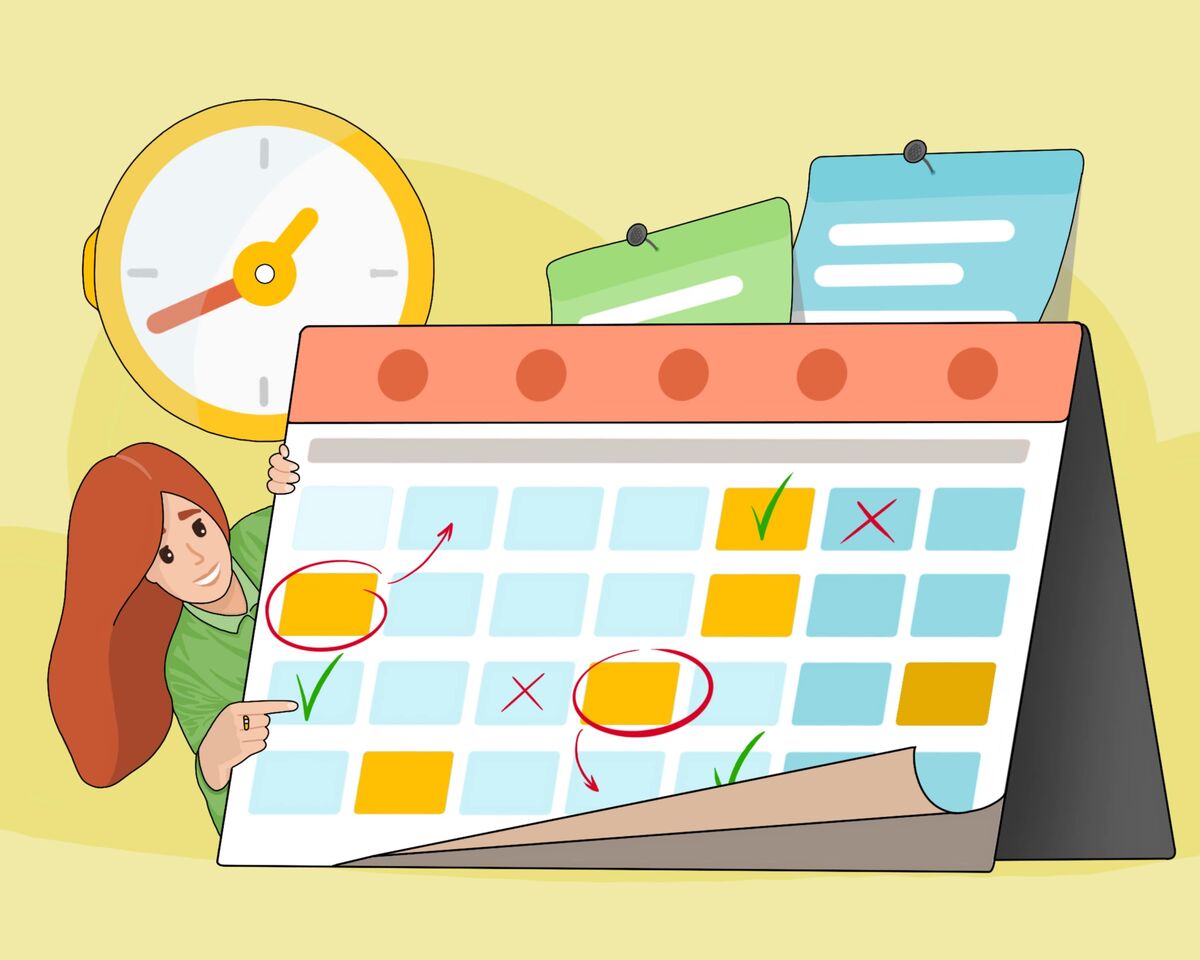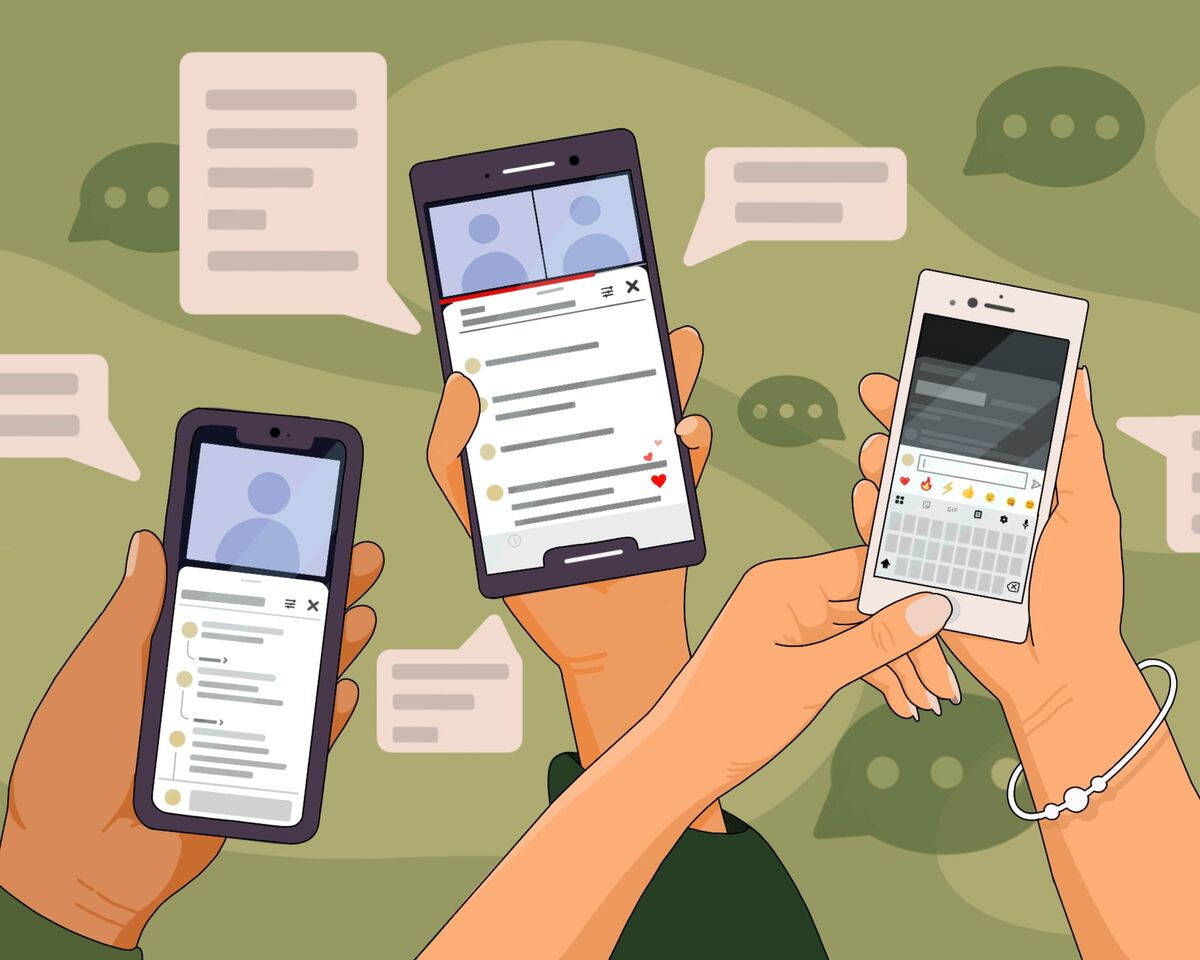Tips & Tricks for beginners: How to Start or Revive a YouTube Channel

Newbies on YouTube aren't always those who've just created a brand new channel for fun. They also include people with prior experience who, for some reason, left and are now adapting to the new changes on the platform. YouTube algorithms are constantly evolving.
Below, we address five frequently asked questions from individuals who are embarking on their YouTube journey.
1. What to do after a long break on YouTube: create a new channel or continue an old one
There are no guarantees, statistics, or research on what performs better - a channel with zero subscribers or a channel after a year-long break. There are too many factors that can change the course of events and tip the scales in one direction or the other.
Case 1: When there are few subscribers on the old channel
Let's define it from the start - the concept of "few" carries different numbers for everyone, so let's use the explanation "so few subscribers that you haven't yet built a fan base that consistently watches and comments on every video." But if we talk about numbers, it's usually up to 500 subscribers.
Now, to the main point. If you have few subscribers on your channel, there is no difference between a new channel or an old one. You can create a new one or rebrand the old one - it will look the same to YouTube. YouTube relies solely on viewer response.
Case 2. If you have subscribers
In this case, you may wonder if it’s worth creating a new channel or continuing with the old one.
If you decide to change the channel's niche significantly, such as from cooking to construction, for example, it's better to create a new channel. The number of subscribers you currently have won't help in promoting the new niche. It may actually hinder your progress.
Your audience originally came to your channel to watch cooking recipes, and when you stopped producing content, they forgot about you. Those viewers who awaited a triumphant return expected new recipes.
So, a new channel's niche doesn't match the interests of your old subscribers, and they will start unsubscribing from you en masse. And these mass unsubscriptions may not be good for your channel's promotion. YouTube doesn't evaluate the connection between unsubscriptions and a change in niche - it sees unsubscriptions and decides that the channel is producing poor content.
You might be thinking, "Well, not everyone will unsubscribe! Some will stay and want to support me." This thought, in general, is correct. However, the percentage of unsubscriptions versus those willing to support won't play a significant role for YouTube.
Another nuance is that even if you don't change the channel's niche but return to the old one, there's a good chance that there will be unsubscribes. It all depends on the length of the break between video publications. If the break was substantial, your old subscribers may simply lose interest in the niche.
Some of them may not immediately notice that you've resumed channel activity, so they'll remain as inactive subscribers, not bringing in views. This is neither good nor bad for your growth, unfortunately.
If the break was minimal - between 3 and 4 months - there's a possibility that your fans will wait for you. Over time, they'll become active on the channel again. The key is to inform your audience in advance about the temporary hiatus in activity. Then they'll genuinely look forward to your return.
If you still choose to continue with the old channel, remember that initially, the algorithms will treat you the same way as completely new channels. Therefore, there's no point in increasing activity by releasing tons of videos per day for two reasons:
- Subscribers might not appreciate this move. They could see you content dump as intrusive and unsubscribe without giving you a second chance.
- Each new video will take a bit of traffic away from the old one, preventing it from taking off. As a result, the views you honestly earned with your content will be spread across a large number of videos.
But if you want to rebuild activity, your releases must be consistent. Two to three times a week at the same time on a regular basis - and then your channel will start gaining momentum again.
If it's emotionally easier for you to create a new channel - go for it. For the algorithms, it won't matter because they look at individual videos first and then at your entire channel.
How does YouTube evaluate the creator: by individual videos or the channel itself ?
Each video on the platform has a life of its own. You can connect videos to your channel using hints and end screens, leave links to other videos in the description - this helps redirect traffic.
Don't worry- poorly performing videos don't impact the algorithm or the growth of your new videos. Just like the registration date of your channel. YouTube isn't interested in when you registered it or when you decided to start using it.
But what does YouTube think about old and new channels?
YouTube recommends creating new channels only if you are changing the niche you will be working in. And that makes sense - it would have to delete all the old abandoned channels.
2. New or old channel to change your niche
A radical change in a channel's niche is a blow to subscribers and their engagement. People, of course, are different: some may like the change of niche, while others may not, and they will simply unsubscribe. And some may remain your subscribers but won't watch the new videos.
Analytics for the channel will also not be able to provide accurate reports on what's happening, as algorithms were based on one audience, and it will take a lot of time to transition to a new one, if this process ever completes.
Conclusion: a small but targeted number of subscribers will always be better than a large number of people who are not interested in your content.
Furthermore, you can migrate some subscribers from your existing channel to the new one if you honestly inform people that you are creating a second channel on a new topic. Then you will attract fans and targeted viewers, making the first step in audience growth.
Some creators ask, "What if I delete all the old videos?" To some extent, this will help. If you leave old videos and change the niche, they will continue to circulate in YouTube's system and be recommended to people. However, if people visit your channel and don't find new videos on the same topic, they may not subscribe or, if they do, they will unsubscribe soon after. If the latter becomes a common trend, it's definitely not a good signal to YouTube.
But if you delete videos, your subscribers won't disappear. In YouTube's memory, you will still be a channel with the old niche. Analytics won't reset to zero, so the answer to this question is clear: if you are changing your niche significantly, you should create a new channel.
However, adding new themed content to your channel over time is actually a good practice to diversify your content. For example, if you had a channel about handmade knitting with needles, your viewers would likely enjoy watching tutorials on how you crochet or sew.
3. How to understand that a channel is at a dead end, and what to do about it
The only truly "dead-end" situation is when you've lost interest in what you're doing. The only way out in this case is to stop running the channel.
There are, of course, situations like channel deletion due to violations of community guidelines or copyright infringement, but in these cases, YouTube and its decisions dictate the outcome. You might receive a few warnings, reducing your reach as a result, or you could even lose your channel.
If your channel has completely stopped growing, that's also a dead-end. There can be many reasons for this:
- Decreased relevance of your channel's topic in general.
- A topic that's too niche to attract a larger audience (low demand).
- Uninteresting or low-quality content.
- Changes in the YouTube platform.
- Artificial engagement or view manipulation.
For each of these scenarios, working with channel analytics is required. It's necessary to check how competitors are doing, and if this is a widespread issue, try making slight changes to the channel's niche to rekindle interest.
If your content has become less interesting or falls behind in quality compared to competitors, it needs, at the very least, to be compared with these competitors. At most, you should start rebranding and expanding your topics.
If the content you are creating has become too narrow, simply expanding it by adding new categories to the channel is required.
In any of the above mentioned cases, you can ask your subscribers what they like, what they don't, and how to improve the channel.
As for platform changes, things get more complicated here. Remember how YouTube had to limit children's content at the beginning of 2020? These situations are beyond the control of creators, and they may require complex and unfavorable compromises, although they happen very rarely.
If engagement manipulation is the cause of your decline, it's straightforward – you can't use engagement manipulation; it's against YouTube's rules. You'll be able to recover, but it will take time and effort.
Another dead-end for a channel can be the lack of new ideas or, conversely, having too many ideas. In the former case, you need to search for new topics and inspiration. In the latter case, it's better to start new channels alongside the existing one because, as you remember from the previous point, changing the niche on the old one can harm your current channel and negatively affect its growth.
There's one more piece of advice that can help you get out of a slump – ask a specialist to look at your channel from an outsider's perspective. Your view is 100% biased, so you need someone who's impartial. Unfortunately, critically assessing your own creation is tough for any creator.
In all of these cases, keeping an eye on analytics and taking measures to improve your content is essential. Always aim to raise the bar, strive to outperform others, find your unique angle, especially if the old one isn't working anymore, or if you had one at all.
4. Delete, re-upload or re-optimize old videos
First, let’s look at the situation your channel is in:
- You personally don't like them: If you've evolved as a content creator and no longer resonate with the style or message of your old videos, it's a sign they might not align with your current brand.
- They don't generate views: If older videos aren't attracting views, they might be hurting your channel's overall performance, as YouTube's algorithms consider viewer engagement.
- They contain now-banned or warned-against content: YouTube's policies evolve, and some content that was once acceptable might now lead to channel strikes or warnings. This includes certain pranks or medical topics that might not comply with current guidelines.
Many people are self-conscious about how they appeared in their earlier videos, so they want to delete old videos. However, sometimes YouTube unexpectedly starts recommending videos from many years ago, so it's not worth deleting them for such a trivial reason. How you looked and spoke in the past isn't as important as you think. Viewers who see your old videos and come to your new ones will appreciate your progress.
If your video isn't growing but you believe it's great and deserves better, there are two options: re-uploading and re-optimization.
Remember that you can't re-upload the same video to the same channel; you could get a strike from YouTube. If you want to re-upload a video without changes, it's better to delete the old one. You can always reshoot and re-edit the video, adding new segments. YouTube considers this new content.
Re-shooting an old video entirely is the most straightforward option—it's entirely new content.
Re-optimization involves reworking all the video's elements: title, description, tags, and thumbnail. These actions can be effective, but don't expect immediate results. YouTube algorithms take time to adjust, but this can lead to explosive growth in the long run.
Re-uploading is more effective for older videos, as re-optimization works better for videos with current potential.
You shouldn't stress too much about old videos. It's better to spend time and energy creating new ones. If any old videos violate YouTube's policies and risk getting your channel blocked, then you should definitely remove them from the platform.
Ultimately, don't forget that removing any video from your channel affects your channel by reducing traffic. Every video brings in some level of traffic, big or small.
The questions discussed in this article are highly individual and each situation is nuanced. The final decision you make will ultimately be up to you. Remember that the methods for developing small and large channels cannot be the same, as channels with over a hundred thousand subscribers can afford more flexibility in choosing topics, breaks between video releases, and other maneuvers compared to channels with 1000 subscribers. It all depends on the fan base you've built and their overall loyalty. But hopefully our advice will help you navigate your YouTube journey.
Good Luck.




